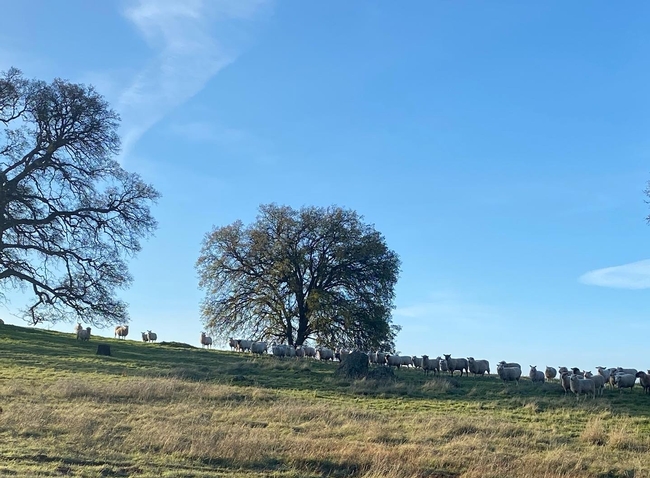I suppose my obsession with the weather apps on my smartphone started during the 2013-2014 drought. I've always been a weather geek, but during that dry spell, I found myself constantly checking multiple apps to see if one held more hope for moisture than another. That fall, I was lambing out a large commercial flock of sheep in the California Delta. Later that winter, I went to work as the beef herdsman at UC's Sierra Foothill Research and Extension Center (SFREC). Grass - and the moisture to grow it - was never far from front of mind. And as a dry, cold December stretched into an even drier January, we reduced our sheep numbers (both on the outfit I was working for, and in our own flock). As the weather stayed dry that spring, we hunted every blade of grass we could find at SFREC. And looking at the plethora of weather apps that are still on my phone today, I find myself getting nervous about this fall and winter... again!
Based on that 2013-2014 experience, I've become much more focused on my grazing planning. For me, this involves multiple timeframes - I'm thinking about where our sheep will be able to graze over the next 3-4 weeks, as well as what our forage resources might look like into late January and February (during late gestation for our ewes). Beyond lambing, I start thinking about how much irrigated pasture we'll have available to us next summer. Based on this planning, I can adjust when and where we move the sheep in the short term. In the long term, I can adjust our flock size to make sure our forage demand balances with our forage supply.
Setting our stocking rate, then, becomes a critical part of our drought strategy. Do we stock for an "average" year (whatever that is)? Do we stock for a good year with the understanding that we'll need to sell animals if our grass doesn't come on? Or do we stock conservatively - for the worst years - and adjust by bringing in more animals if we're pleasantly surprised by rainfall and grass? My friend and colleague Josh Davy, who runs cows in the Sacramento Valley, says, "My starting point is to set my stocking rate so that I can survive December and January - those are the toughest months, feed-wise."
We can also affect our stocking rate simply through our management calendar. We try to matching our lambing period (which is also our period of highest forage demand) with the onset of rapid grass growth (usually in late February or early March). Most years, this works out - although the incredibly dry period we had in the first quarter of 2022 tested my resolve. This also allows us to reduce our stocking rate as the forage dries out in late spring and summer - by simply selling our lambs.
All of this brings me back to THIS fall and getting nervous. We had a germinating rain in mid September - and we've had no precipitation since here in Auburn. The grass that germinated after that first rain has stopped growing (and in some cases, died). Our irrigation water shut off on October 15, which means our irrigated pasture won't grow much more forage unless we get some rain. Last night, I mapped out our grazing for the next month - I think we'll have enough grass to stay on our irrigated pasture until the first weekend of December.
After that, we'll see where we are - if we get rain in the next 7-10 days (and there appears to be some in our forecast - depending on the app I'm looking at!), we'll have some green forage on our lower elevation annual rangelands by the time we move the sheep. If we don't get any rain, we'll need to provide supplemental protein to allow the ewes to digest the dry forage we saved as a buffer. At this point, I'm reluctant to sell any bred ewes - we've already invested in next year's lamb crop.
During last year's dry spell, Siskiyou County Livestock and Natural Resources Advisor, Grace Woodmansee and I developed a drought decision support tool to help ranchers think about their short- and long-term drought strategies. The core of this tool is a 12-month forage calendar - a tool to help you think about potential gaps in your forage supply through the course of the year. This year, I've found it helpful to revisit my forage projections on a regular basis - grass that seemed plentiful after last December suddenly looked short in mid-March. Similarly, what looked to be a dismal grass year in March turned around with April's storms. The process of planning - of looking ahead at our grass - helped make my decision-making process more rational. Had April remained dry, I would have sold sheep; since it turned wet, I was able to maintain my numbers. My forage calendar, in other words, allowed me to establish some realistic key dates for decision-making.
Now, if you'll excuse me, I need to check a few more weather apps - one of them is bound to have an optimistic forecast for next week!
